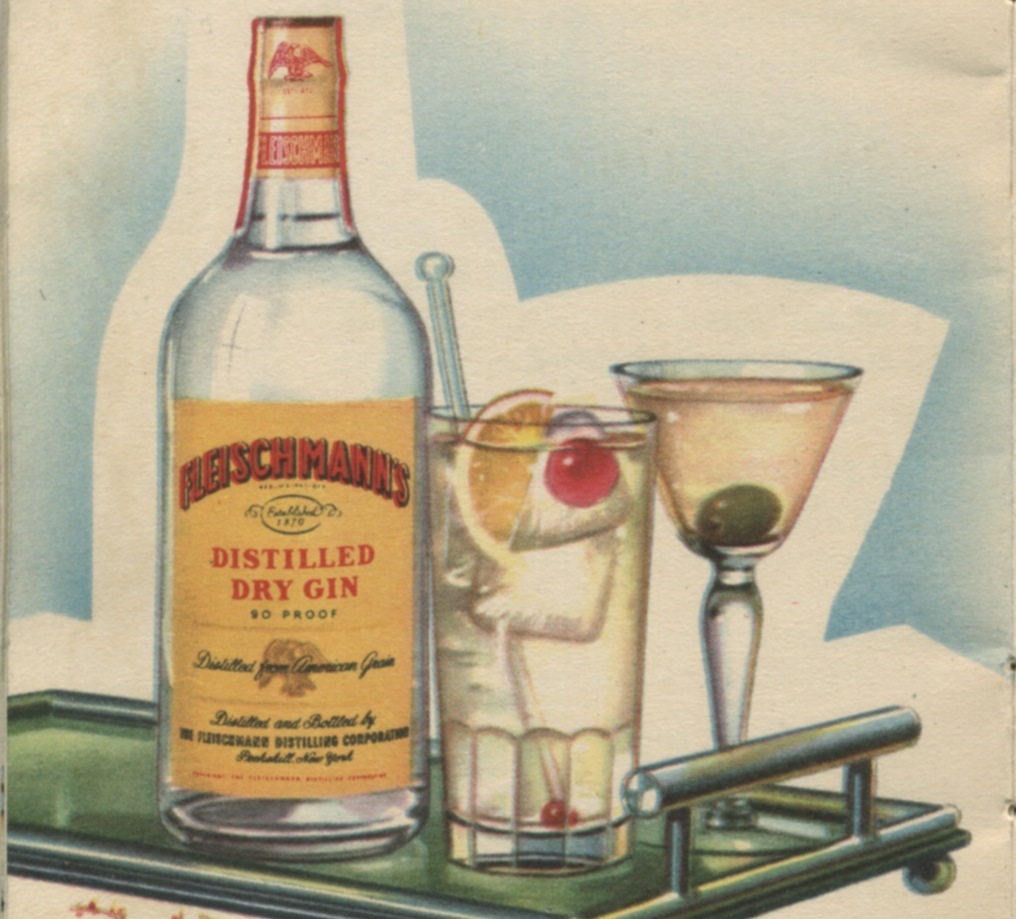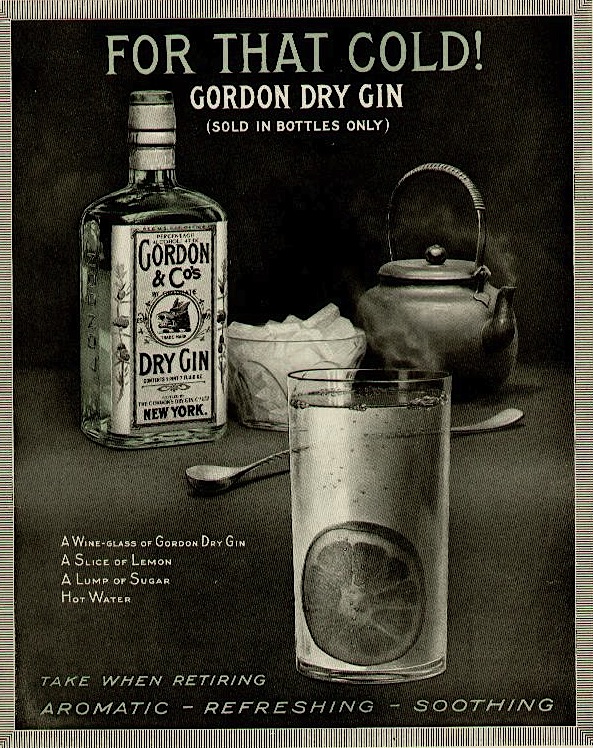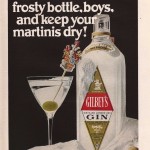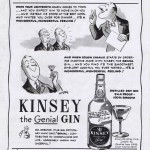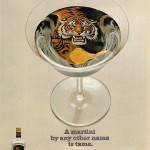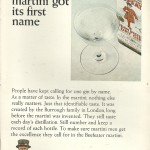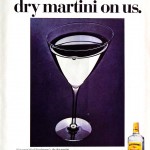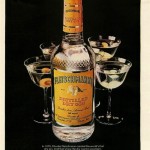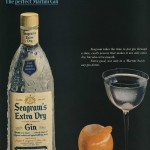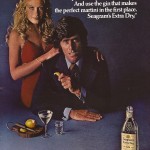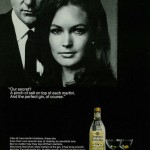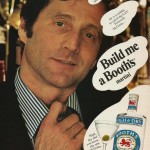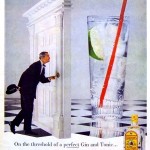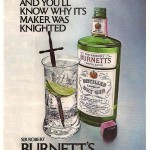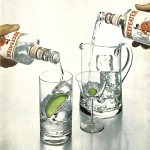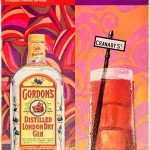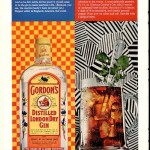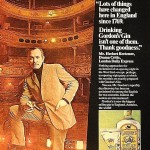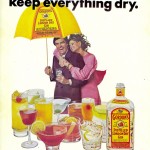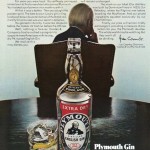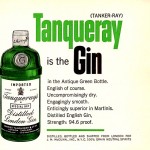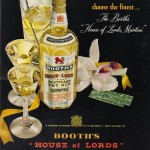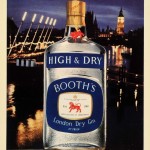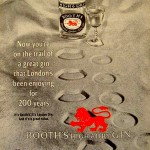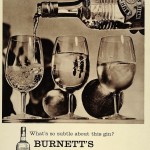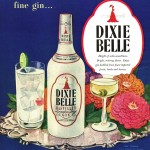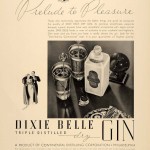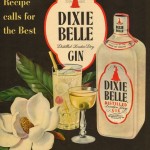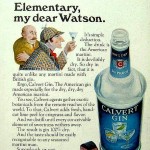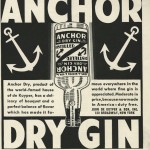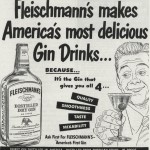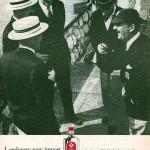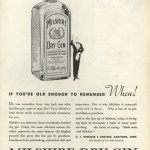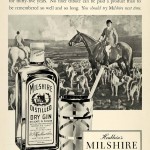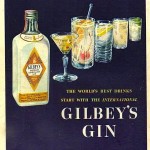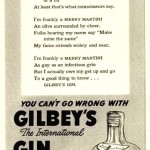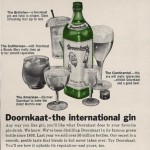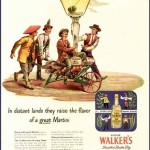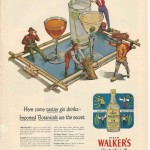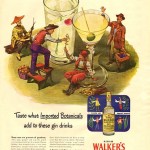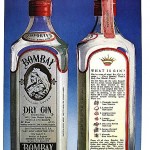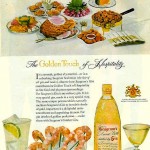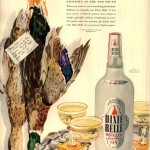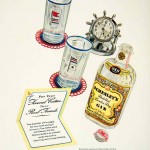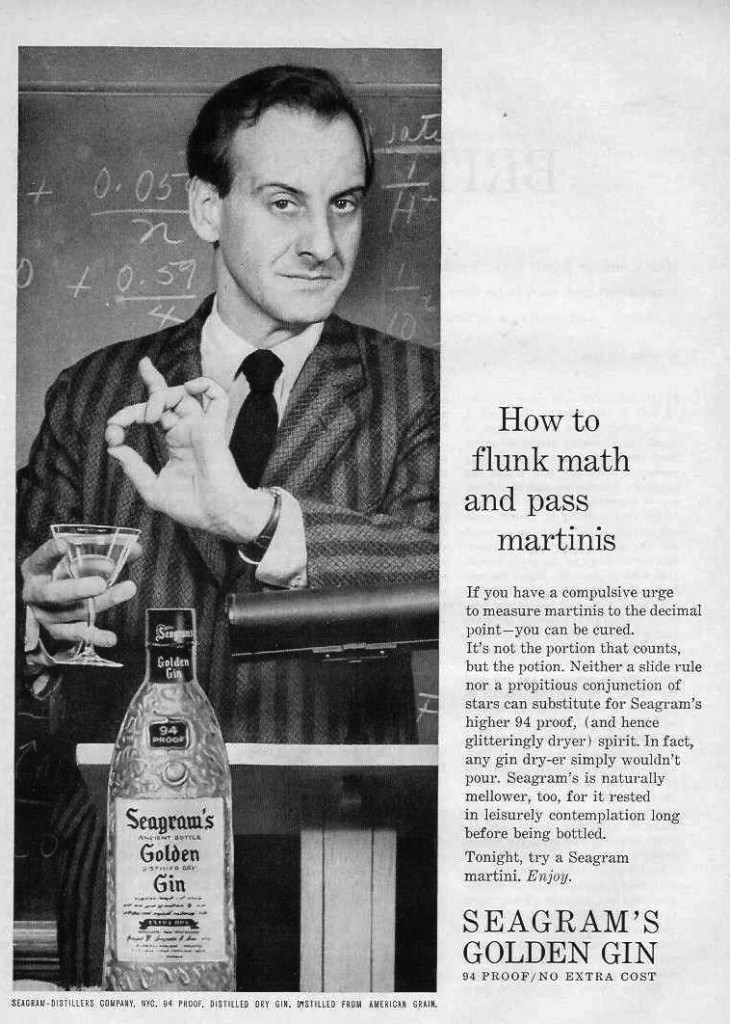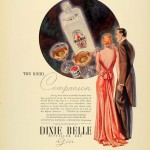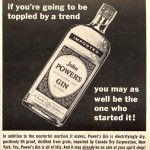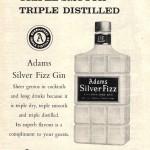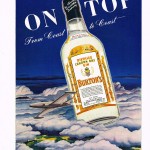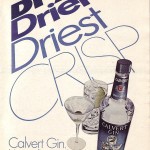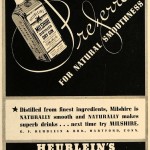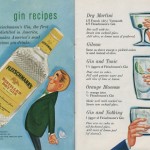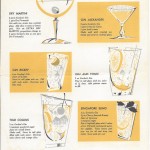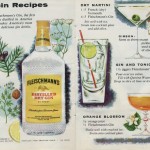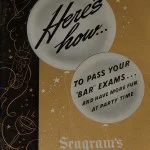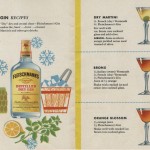Vintage Ad Archive: The Splendor Of Gin!
Gin is possibly the trickiest and most particular of all beverages, a category of liquor that's strictly defined, incredibly diverse, and hugely divisive amongst cocktail aficionados – the ingredients and flavor profiles vary wildly from distillery to distillery, and consumers form strict allegiances to specific brands. The one constant to all Gins is the process: grain spirits distilled and infused with botanical essences.
Drinking good Gin is the most refreshing activity imaginable – drinking poor Gin is a truly horrifying experience. When it's good, one discovers layer upon layer of flavor in a single sip. When it's bad, one might as well be sipping pine needles on the rocks with a twist of lime. Its character is unique among spirits, possessing fresh notes of greenery in place of the aged woods of whiskey, the caramel richness of rum, or the deep echoing warmth of tequila.
A specific Gin can be revered for its delicate floral notes, respected for its tones of citrus and sage, or reviled for relying too heavily on one-dimensional elements of juniper and citrus rind. The best varieties stimulate the senses with notes of overgrown gardens and exotic spices, conjuring up pastoral meadows and forested hillsides as they cross your lips.
And now that the weather is turning warmer, we're truly entering into Gin season. Whether it's the base of a classic highball or used in a just-invented cocktail, it's the perfect liquor to compliment to short sleeves and sunshine. So for this latest dig into the archives, I've chosen some memorable visuals that Gin distillers have used to represent themselves.
The earliest example of Gin advertising in my collection dates from 1916 – a magazine ad promoting Gordon & Co. Dry Gin as a soothing health tonic.
Of course, just a few years after that Gordon's ad, the United States would ban the sale and transportation of alcoholic beverages. Prohibition gripped the land, and Gin proceeded to become America's Jazz Age tipple of choice; readily available (and relatively affordable) in speakeasies and on the black market, the perfect refreshment for illicit cocktail parties and ill-advised affairs.
And once Prohibition was lifted in 1933, distilleries were quick to seize on this new Gin-savvy market, and launched a full-scale assault on an American public.
From that point on, Gin was everywhere. In movies, in books, and advertised in every newspaper and magazine. Distillers elbowed each other aside to promote themselves, and tried a variety of different approaches to get their point across. Many tried to convince consumers that their brand was the ideal ingredient in martinis.
Some campaigns focused on Gin and tonics.
And some tried to popularize entirely new Gin cocktails, with mixed results.
And it wasn't all mixed drinks – some brands decided that to truly gain prestige, they also needed to promote Gin as being so delicious, one could simply drink it straight.
Some capitalized on the "Britishness" of their liquor.
Some chose to position themselves as homegrown American alternatives.
And some split the difference. Literally.
A few select varieties preferred a more worldly approach, presenting Gin as a international beverage, blending flavors from around the globe.
And a number of distilleries capitalized on the communal aspect of Gin drinking, convincing consumers that they should keep their brand on hand for social functions, and to serve to any honored guests.
Some even enlisted celebrity spokespersons.
There were campaigns that simply defied easy categorization, and fell into the realm of the out-and-out bizarre.
And then there were ads that dispensed with the folderol, and simply said "this tastes good, buy it".
Possibly the most fun, however, were the various recipe booklets and drink guides that Gin producers released to promote their wares. Given away at liquor stores and inserted into magazines, these provide a fascinating look into midcentury cocktail culture. Fleischmann's produced a new "Mixer's Manual" nearly every year, Seagram's released a number of themed booklets, and other companies followed suit.
And now, as tends to happen when I dig through these stacks of boozy memorabilia, I'm starting to feel a bit thirsty. I guess it's time to pull out the glassware, the ice bucket, and the bottles, and mix myself up a refreshing Gin and tonic... I'll see you again soon, for another tipsy trip back in time!

